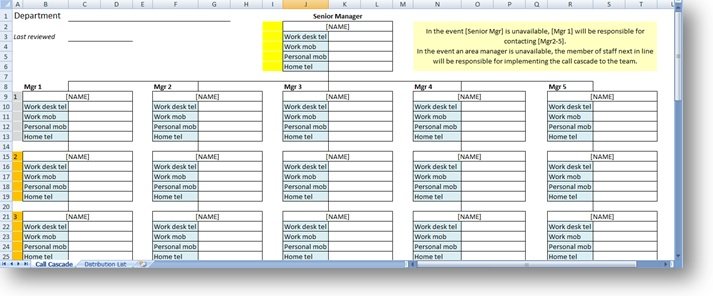What May Be Missing in Your Community Governance
When we think about community governance, we tend to think about the guidelines and documentation that are “must haves” for running our online communities. Terms of use, user guidelines, submission guidelines for content, and other “ways of working” are what you typically find. And all are critical to make sure that your online community runs smoothly.
The question I would challenge community builders with is “have you thought of everything?” You might be thinking to yourself that you have all of your guidelines and policies in place. Legal has approved your terms of use. Your user guidelines get a regular review. Your strategy and programming are always being checked and your metrics are solid. What more could you do?
What happens if your site crashes? What is your community platform vendors SLA for outages (or your IT department’s SLA if it’s custom built)? What if there’s a cyber-attack? What is the protocol for disaster response and who do you contact?
These are all real situations that can absolutely happen and, somehow, get left out of community governance. Yes, your organization may have very well taken care of these procedures holistically, but what can you do to ensure that community is covered should there be a major issue or outage?
Make a disaster recovery plan
Let’s say you’ve gone about your normal day and have logged off for the evening. When you left, all seemed well with your community. You decide to do one quick check-in to make sure all is well before going to bed and you’re hit with a weird error message you’ve never seen before. You can’t login on the back end and your email has a ton of messages from your community members stating that they can’t get in. Or worse yet, you’ve been hit with a DDOS attack. Now what?
While we all would like to think that our online community is protected by the best cyberthreat technology out there, it doesn’t mean we’re not vulnerable to minor and major events that can take our communities down for quite some time. If you are working with a community vendor, you should have a disaster recovery plan in place with the proper SLAs and site down procedures that will help you get things up and running again. If your platform is custom built, you should have clear processes in place with your IT department that will help you get back online in the event of an emergency. If you don’t, I urge you to take the time and get one in place ASAP. If one exists and you haven’t reviewed it since you created it, now would be a good time to review it and make sure it still makes sense. If it doesn’t, update it.
Know who to call when there’s an emergency
I’m a firm believer in an emergency phone tree. If you’re not familiar, a phone tree (also referred to as an emergency call tree) is a list of people to call when something goes awry. In this example below, the senior manager calls their direct reports who is then responsible for contacting their direct reports in the case of an emergency until everyone has been contacted. The managers or leads then report back to the senior manager that everyone has been contacted.
*Image from http://apcc2017.com/phone-tree-template/
Why is this important? This ensures that your team and/or relevant stakeholders are made aware in the event of any emergencies. Keeping the necessary people in the know is key to ensuring open communication and providing support where it is needed.
Create a RACI for issue management
A RACI (Responsible, Accountable, Consulted, Informed) matrix is a project management tool that can also provide clear guidance on who is responsible for what when an issue arises. This provides a clear understanding for who is responsible for the act of resolution (i.e., who has to fix it), who is accountable for ensuring it gets done (community manager, director, etc.), who you need to consult with before making a decision, and who you need to inform that something is happening. If you’re a team of one, this will be especially handy as you navigate tough situations and can even be used for the managing of normal daily operational tasks.In all cases, community governance documentation needs to include these critical pieces of information simply because it all affects community operations.
Guidelines and legal documents can only govern what your community members can and cannot do. It doesn’t help you manage the things that are out of your control. Complete a thorough governance review to make sure your community is covered from all angles and update outdated documentation, as needed, on a regular basis.
What else would you include for your community governance documentation? Let me know in the comments below!
